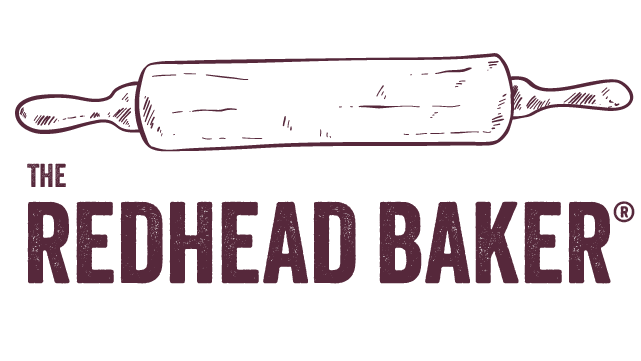I haven't typically been one to celebrate Valentine's Day for the last several years. It was one of the few times I hated going out to eat, and any gift even remotely romantic has its price jacked up because of the holiday.
This year, I decided (very last minute) to cook a "nicer than normal" Valentine's Day dinner. We'll start with Pear and Brie Quesadillas. Pears courtesy of Philadelphia's Italian Market (the nation's oldest and largest outdoor curb market). The brie cheese is from DiBruno Brothers, an Italian cheese shop that opened in the Italian Market in 1939. If you give them an idea of what you're looking for (a soft, mild cheese; a sharp, hard cheese), they'll give you at least 3 suggestions (with a taste), and the history of each cheese.
Then, Rack of Lamb with Rosemary Roasted Potatoes and Shallot Vinaigrette, courtesy of The Food Network. The lamb, fresh rosemary, shallots and potatoes are also from the Italian Market. The lamb is from Cannuli's Meats. We'll also have one of the boxes of frozen veggies from the grocery store. Or asparagus.
For dessert — cake. Rose Levy Berenbaum's All-Occasion Downy Yellow Butter Cake from her cookbook, The Cake Bible, iced in Swiss Meringue buttercream (the buttercream recipe came from a chef at the culinary school I attended). Both of these recipes are below.
Rose's cake recipe is my go-to when someone requests vanilla cake. It's moist, yet sturdy enough to handle buttercream icing (which is heavier than store-bought whipped frosting). I love her step-by-step, foolproof instructions.
Rose's All Occasion Downy Yellow Butter Cake
From The Cake Bible
Ingredients
- 6 large egg yolks (save the whites for the buttercream!)
- 1 cup whole milk, divided
- 2 ¼ teaspoon vanilla extract
- 10 ½ oz (3 cups by volume) sifted cake flour
- 10 ½ oz (1 ½ cups by volume) granulated sugar
- 1 tablespoon + 1 teaspoon baking powder
- ¾ teaspoon salt
- 6 oz (12 tbsp) unsalted butter at room temperature
Directions
- Preheat oven to 350 degrees. Spray two 9-inch cake pans with nonstick spray, line bottoms of pans with a sheet of parchment or wax paper cut to fit the bottoms of the pans, and spray with nonstick spray again. This will prevent sticking.
- In a small mixing bowl, combine the yolks, ¼ cup of the milk, and all of the vanilla extract, and beat lightly.
- In the bowl of a stand mixer, stir together the flour, sugar, baking powder and salt. Add the butter in chunks, and the remaining ¾ cup of milk. Mix on low speed until the batter is moist.
- Increase mixer speed to medium (4 to 6 on KitchenAid) and beat for 1 minute 30 seconds. This beats air into the cake batter, and causes gluten to form, which makes up the structure of the cake. Turn the mixer off, and use a spatula to scrape the batter off the sides and bottom of the bowl.
- Return to low speed, and add ⅓ of the egg mixture, then beat on low for a few seconds, then on medium for 20 seconds. Repeat with another ⅓ of the egg mixture, beating on low, then medium, and repeat with the last ⅓. Scrape the sides and bottom of the bowl again.
- Divide batter between the two pans, and bake for 25 to 35 minutes, or until a cake tester or thin knife inserted in the middle of the cakes comes out clean.
- Cool the cakes in the pans for 10 minutes on a cooling rack, then invert onto plates or cardboard cake rounds. Cool completely before frosting.
I love this buttercream, because unlike Italian Buttercream, it doesn't taste like you're eating a stick of butter, and unlike American Buttercream, it's not excessively sweet.
Swiss Meringue Buttercream
Recipe by The Restaurant School at Walnut Hill College
Makes enough frosting to fill and ice two 9-inch cakes
Ingredients
- Medium saucepan with about an inch of simmering water
- 12 egg whites
- 1 lb 4 oz granulated sugar
- 2 lb unsalted butter at room temperature, cut into tbsp-sized chunks
- Vanilla extract to taste
- Shot of liqueur (optional, use less vanilla if you choose to use liqueur)
Directions
- Place the whites and the sugar in the clean, dry bowl of a stand mixer. Place the mixing bowl over the simmering water (the bottom of the bowl should not sit in the water). Continually whip the egg whites and sugar until heated and the sugar dissolves.
- Remove bowl from the water and place on the mixer. Whip until doubled in volume.
- Switch to the paddle attachment. Add the butter, 2 to 3 pieces at a time, whipping until fully incorporated before adding more. The time it takes to incorporate will get longer and longer as more butter is added.
- After all the butter is added, add vanilla and liqueur (if using) and continue beating until the buttercream comes together and looks smooth and creamy.
- Use immediately, or refrigerate until ready to use. If using later, allow buttercream to come to room temperature, then beat again before using.
